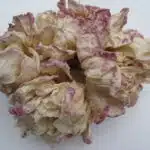Pruning plants is a critical step in gardening, and one that can make or break the success of your garden. In fact, according to the National Gardening Association, over 80% of home gardeners believe pruning is essential for plant health. But with so many different types of plants out there, it can be hard to know when and how much to prune. That’s why we’re here with ‘The Essential Guide to Pruning Plants All Year Long’ – a comprehensive guide on how to properly prune your plants throughout the year.
From evergreens to roses and everything in between, this guide will provide you with all the information you need on when and how to prune different types of plants. We’ll discuss which tools are best for each job and explain the importance of timing when it comes to pruning. Whether you have a balcony full of flowers or an entire vegetable patch that needs tending, this guide will help you figure out exactly what needs to be done and when.
So if you want your plants looking their best all year round, read on for our expert advice on how to keep them healthy and happy through careful pruning!
Why Pruning Is Important
It’s hard to overstate how important pruning is for keeping plants healthy and thriving. A simple snip of a branch can make all the difference! Pruning – or cutting away dead or diseased branches – can help encourage new growth, keep trees and shrubs in shape, and even help certain plants produce more flowers and fruit.
The benefits of pruning extend far beyond simply maintaining a neat appearance. It helps reduce stress on the plant, encourages it to grow more vigorously, prevents disease by removing infected areas before they spread, and helps maintain proper size and shape. Plus, it can also help you save money in the long-term by preventing costly repairs due to damage caused by overgrown limbs or branches.
Pruning is not only beneficial for your plants but also for you as a gardener — it allows you to keep your garden looking its best without any added effort or cost. So if you want to ensure that your garden looks its best all year round, then pruning is an essential tool for success!
When To Prune Different Types Of Plants
Ah, pruning. An ancient art that’s been practiced since the dawn of time – or at least since we started gardening! But when exactly do you prune? Well, we’re here to help you figure it out. Let’s take a look at when to prune different types of plants.
Pruning is a delicate balancing act. Prune too late and you risk damaging your plant; too early, and you may be stunting its growth. That being said, timing is everything when it comes to pruning plants. Different types of plants require different pruning times throughout the year so let’s explore what those are!
For perennials such as lilacs, daisies and hostas, prune in late winter or early spring before they begin their active growing period. On the other hand, deciduous shrubs such as hydrangeas should be pruned right after flowering in mid-summer or fall – just make sure to wait until all flowers have withered away first! Lastly, annuals like impatiens should be trimmed back regularly throughout the growing season to keep them looking their best and promote new growth.
So there you have it – while it may seem intimidating at first glance, with a little bit of research and practice you’ll become an expert at knowing when to prune different types of plants. Now that you know what timing works best for each type of plant, let’s move on to the tools and supplies needed for successful pruning!
Tools And Supplies Needed For Pruning
Coincidentally, it turns out that in order to get the job done right, you need the right tools and supplies for pruning. Whether you’re a beginner or an experienced pro, having the right tools is key to achieving success. In this section, we’ll go over what you need for successful pruning.
First off, you’ll need sharp pruners or shears. A pair of bypass pruners are great for cutting through stems and branches up to 1/2 inch thick. For thicker branches, loppers are your best bet. You’ll also need a saw for cutting through thicker branches that can’t be cut by other tools.
It’s also helpful to have some safety gear on hand such as gloves and eye protection when pruning. This will protect your hands from cuts and scrapes while protecting your eyes from any debris that could become airborne when cutting. Additionally, a ladder is essential if you’re dealing with taller trees or shrubs that require reaching higher up branches.
Now that we’ve gone over the necessary tools and supplies needed for successful pruning, let’s move on to basic techniques that will help ensure beautiful plants all year long.
Basic Pruning Techniques
Pruning plants is an important part of gardening and it’s something that should be done year-round. Did you know that the average gardener spends about 7 hours pruning their garden every year? It’s a great way to maintain healthy growth in your plants, and it takes a bit of practice to perfect the technique.
Now let’s talk about basic pruning techniques. First, you’ll need to select the right tool for the job. Hand pruners are great for small branches and twigs, while loppers are better-suited for larger branches. You’ll also want to make sure you have a good pair of gloves and protective eyewear before starting any pruning job.
Once your tools are ready, it’s time to start trimming! Keep in mind that you should always cut at an angle just above a bud or branch node – this will help encourage new growth in the right direction. Also, try not to remove more than one-third of the branch or stem at once as this can damage the plant. If you’re still unsure, look up some tutorials online – there are lots of helpful resources out there!
These basics steps will help ensure that your plants stay healthy and strong all year round. Now let’s move on and take a closer look at how to properly prune hedges and shrubs.
Pruning Hedges And Shrubs
Pruning hedges and shrubs is an important part of gardening, with over 63% of gardeners regularly pruning their plants. It’s a great way to keep them healthy and looking their best all year long. But it can be difficult to know when and how to prune your hedges and shrubs.
The key to successful hedge and shrub pruning is knowing what type of plant you have and what its specific needs are. Each type of hedge or shrub requires different techniques for the best results. In general, though, there are some basic principles that apply regardless of the plant type. You should always use sharp tools, avoid over-pruning by taking off no more than one-third of the plant’s foliage at any given time, and make sure to shape the plant nicely during your pruning session.
Pruning trees follows many of the same rules as hedges and shrubs, but with some additional considerations. When dealing with trees, it’s important to take into account their size, age, and growth habits in order to ensure you don’t damage the tree in any way. By following these tips you can keep your plants looking beautiful all year round! Moving on to pruning trees…
Pruning Trees
Ahh, pruning trees. It’s a classic part of garden maintenance that can be both enjoyable and beneficial to your plants. After all, who doesn’t love seeing the results of their hard work? Pruning trees isn’t complicated but it does require some patience and understanding of the process.
When pruning trees, it’s important to understand why you’re doing it. Pruning helps shape and direct the growth of trees and shrubs, as well as removing dead or diseased branches. Before starting on any pruning job, make sure you have the right tools for the job at hand. Pruners, loppers, saws and pole pruners are all great tools for tackling different sized branches when pruning trees.
Now that you have all the necessary tools, you can begin to assess what needs to be done. If you’re dealing with smaller branches or twigs, start by using your pruners or loppers to remove them close to the main trunk – no more than 1/3 of the circumference should be cut away in one go. For larger branches use a saw; make sure you don’t leave any stubs behind after cutting back so that new growth is encouraged.
The next step in your garden maintenance journey is to tackle those vines and climbers!
Pruning Vines And Climbers
Ah the age old question: “What was the best way to prune a vine or climber?” Well, let me tell you, there is no one answer. It all depends on the type of plant and its size. But fear not, for we have assembled an extensive guide that will take you through the process step-by-step!
The first step in pruning vines and climbers is to identify the type of plant. Different types require different pruning techniques. Once you know what kind of plant it is, you can begin to assess its needs. Is it overgrown? Are there dead branches that need to be cut back? This information will help you make decisions about how much and where to prune.
Finally, when it comes time to actually start pruning, make sure your tools are sharp and clean. This will help prevent damage to your plants as well as spread of disease from plant to plant. Additionally, always be careful not to overprune – taking off too much can cause more harm than good! With these tips in mind, pruning vines and climbers should be a breeze!
Now that we’ve tackled vines and climbers, let’s move on to the next step in our journey: pruning perennials.
Pruning Perennials
Pruning perennials is an important step in keeping your garden looking its best. While some plants need to be pruned yearly, others will survive and even thrive with less frequent pruning. Knowing when to prune perennials is key to keeping them healthy and vigorous.
When it comes to pruning perennials, timing is everything. Depending on the type of perennial, you may need to wait until spring or fall to begin pruning. This can help ensure that the plant’s growth cycle isn’t interrupted before it has a chance to fully bloom and set seeds. Additionally, some perennials should only be lightly trimmed during the growing season, while others can benefit from more extensive pruning after flowering.
No matter what type of perennial you’re dealing with, proper technique is essential for achieving the desired results. Make sure you use sharp tools and clean them between uses in order to minimize damage and disease spread. It’s also important to understand which parts of the plant need to be cut back in order for it to remain healthy and productive over time. With a little practice and patience, you’ll soon become a pro at pruning your perennials!
By following these tips, you’ll have no problem keeping your garden looking its best year-round as you move onto the next step: pruning annuals.
Pruning Annuals
Time travel has never been so easy – or so necessary – as it is when it comes to pruning annuals. With an understanding of the best time for trimming these plants, you can make sure your garden stays looking its best year-round. So let’s jump into the past, present and future of pruning annuals.
First up, it’s important to know that annuals bloom on new growth, making regular pruning essential for their health and appearance. That means tackling them before they start growing in the spring and then again in midsummer when the flowers start to fade. Trimming away frayed leaves and spent blooms will help encourage more vigorous regrowth and ensure healthy flowering throughout the summer.
But there are a few things to keep in mind before snipping away. For example, some varieties of annuals will re-bloom if left alone after the first flush of flowers have faded. So be sure to check which type you’re dealing with before cutting them back too drastically. With this knowledge in hand, you can enjoy vibrant colour all season long!
So there we have it: our quick guide to pruning annuals throughout the year. Now let’s move on to mastering roses…
Pruning Roses
“Roses are a special breed of flower that requires special care.” This adage aptly conveys the importance of pruning roses for optimal beauty and health. Pruning roses is an art form that should be done delicately; to do it well, you’ll need to understand their life cycle. Pruning roses during the dormant season encourages new growth in the spring and can help prevent disease.
When pruning roses, start by removing any dead or diseased canes and crossing branches, which can cause issues with air circulation. You’ll also want to shorten any long canes, especially if they’re starting to become leggy. Be sure to cut at a 45-degree angle just above an outward-facing bud, then remove the leaves below the cut. Finally, thin out some of the excess foliage to increase airflow and sun exposure.
Pruning your roses correctly is essential for ensuring that they look their best throughout the year. Pruning not only helps keep them aesthetically pleasing but also encourages healthy growth and prevents diseases from taking hold. After you’ve finished pruning your roses, it’s time to move on to pruning other plants in your garden – like fruits and vegetables – so you can enjoy all the benefits of a beautiful landscape all year round.
Pruning Fruits And Vegetables
We’ve all heard the importance of pruning roses, but what about fruits and vegetables? While it’s easy to ignore the veggies in our gardens, pruning them can have a huge impact on their health. In fact, it’s just as important as pruning roses!
When it comes to pruning fruit and vegetable crops, timing is everything. Generally, it’s best to prune during the early spring and late summer months. This helps ensure that the plant has plenty of time to recover before winter sets in. Pruning also helps reduce disease and encourages new growth in the plants.
Pruning fruits and vegetables requires a bit more finesse than roses. If you’re not sure exactly how much to trim away, start by removing any dead or damaged branches first. Then focus on thinning out areas that are overcrowded or crossing over each other. Finally, be sure to leave enough foliage so that the plant can still receive adequate sunlight and air circulation. With proper care and attention, your fruit and vegetable garden will be thriving in no time!
Pruning Houseplants
Pruning houseplants is an important part of their maintenance and care. It’s a great way to keep your plants looking healthy and vibrant, as well as removing any dead or unsightly foliage. But pruning houseplants can be tricky, since they vary in size and shape. It’s important to know how and when to prune them correctly so you don’t damage the plant or cause unhealthy growth.
When it comes to pruning houseplants, it’s best to start by cutting off any dead or discolored leaves or stems. This will help create a better overall appearance and also allow more light into the plant for healthier growth. Additionally, you should also remove any diseased branches or stems to prevent the spread of disease. After that, you should then trim away any excess growth from the previous season which may have become overgrown or leggy.
To finish up your pruning routine for houseplants, it’s essential to shape them correctly. This will give your plants a neat look while also helping contain their growth and prevent them from becoming too large in size. Pruning at the right time of year can ensure that your plants stay healthy and look their best throughout the growing season! With these tips in mind, you’ll be able to keep your houseplants looking beautiful all year long. Now let’s move on to pruning succulents!
Pruning Succulents
Like a sculptor chipping away at marble, pruning succulents is an art form. When done correctly, the results can be stunning.
When pruning succulents, it’s important to understand that different types of plants require different methods. For example, stemless succulents like aloe vera don’t need to be pruned as often as rosette-forming species like echeveria and aeonium. To prevent over-pruning, look for yellowing leaves or areas of dieback before snipping away. It’s also important to use sharp scissors or shears to avoid crushing the plant’s fleshy stems and leaves.
For best results, prune off any dead foliage in late winter or early spring before new growth begins. This will help ensure your succulents have ample time to heal and regrow their foliage before the hotter summer months arrive. Taking care after pruning is just as important as the process itself; providing extra water and light during this period will give your plants a much-needed boost while they recover.
After Pruning Care
Once you’ve gone through the effort of pruning, it’s important to take the proper aftercare steps. This is especially true if you’re dealing with succulents, as they tend to be a bit more delicate. There are a few key things to do after pruning.
Firstly, make sure to clean your tools before and after use. This will help reduce the risk of disease spread, which can have a huge impact on plants’ health. Additionally, you’ll want to protect any exposed areas that have been cut back by applying a sealant like wax or shellac. This will help prevent rot and other damage from occurring in the freshly-pruned area.
Finally, water regularly but don’t overwater. This is especially important for succulents as they need just enough water to stay healthy without becoming too wet and promoting rot. Taking these simple steps can ensure that your plants stay looking their best all year long!
Common Pruning Mistakes To Avoid
It’s important to remember that, when it comes to pruning plants, there are some common mistakes that should be avoided. In this article, we’ll look at 15 such mistakes in order to help ensure you get the best results from your pruning efforts.
First off, avoid over-pruning or removing too much of a plant. This can lead to stunted growth and can cause the plant to become stressed. Also, make sure not to prune in the wrong season. Each type of plant has its own ideal time for pruning, so be sure to research before you start snipping away!
Finally, another mistake that is easy to make is failing to sanitize your tools between uses. Pruning diseases and pests can spread quickly if you don’t take the time to clean and disinfect your tools between jobs. Taking these steps will help protect your plants and ensure they thrive for years to come.
Frequently Asked Questions
How Do I Know If A Plant Needs Pruning?
Pruning plants is an important step in keeping them healthy, but knowing when and how to prune can be tricky. It’s essential to understand the basics of pruning before you start snipping away at your garden. The first step is determining whether or not a plant needs to be pruned in the first place.
In order to know if a plant requires pruning, it’s important to understand its growth patterns, as well as its overall shape and form. If your plant has grown out of control and looks disorganized and unkempt, then it may need some pruning. In general, annuals should be trimmed regularly during the growing season while perennials should usually only be cut back once or twice a year for maintenance purposes.
It’s also important to examine the condition of the leaves and stems on your plants. If there are any dead or diseased branches that need to be removed, then they should be taken care of immediately. Pruning can help encourage new growth and keep plants looking their best – so if you’re unsure whether or not your plants need it, it’s better to err on the side of caution and give them a trim! Taking care of your garden with regular pruning will ensure that it stays healthy all year long.
Are There Certain Plants That Don’t Require Pruning?
It’s time to get down to the nitty-gritty of pruning. As the old saying goes, ‘you can’t have your cake and eat it too’ – in this case, you can’t expect all plants to require regular pruning. You may have wondered if certain plants don’t require pruning; luckily, there are some that don’t need as much maintenance as others.
So, what types of plants can you leave alone? Many shrubs and trees will go through a natural cycle of growth and don’t necessarily need pruning to stay healthy. Evergreens such as spruce, pine, juniper, cedar, and fir are some examples that may not need much attention in terms of trimming or cutting back. Other low-maintenance plants include roses which only require deadheading (removing spent blooms) or perennial flowers like daylilies which should be cut back after flowering.
Pruning isn’t the only way to keep your garden looking its best; there are other strategies for keeping your plants healthy without using shears! Regularly removing weeds and fertilizing can help encourage growth while keeping pests away from your prized flowers and foliage. With a little bit of knowledge and practice, you’ll soon become an expert at keeping your garden looking beautiful without having to break out the clippers every few weeks!
Are There Any Safety Precautions To Consider When Pruning?
Pruning plants is a necessary part of maintaining a healthy, thriving garden. In fact, research shows that up to one-third of all pruning tasks are done to remove dead or diseased branches. But before you get started, it’s important to understand the safety precautions involved in pruning.
When pruning, you should always wear protective clothing and eye protection to avoid injury from flying debris or sharp tools. You should ensure that any power tools are used according to their instructions, and never use them near electric lines. It’s also important to check for wildlife in the area before beginning any pruning work, as this can help prevent accidental harm or disturbance of animals nesting in the tree or bush.
Finally, it’s wise to check with your local gardening experts for advice on the best time and techniques for pruning your specific plants. Different plants have different needs when it comes to pruning and knowing what works best can help you keep your garden looking its best all year long.
Is There A Difference Between Pruning And Trimming?
Pruning and trimming are like siblings, similar yet distinct. Pruning is a more significant task than trimming and requires more precision. It involves removing parts of the plant, such as stems, branches, or roots to encourage growth. Trimming, on the other hand, is lighter work that’s used to maintain the current shape of the plant.
Pruning can be done at any time of year but it has its own unique set of rules depending on the type of plant being pruned. For instance, some plants should only be pruned in spring or summer when they are actively growing while others should be pruned in late fall or winter after their dormant period.
No matter what type of pruning you’re doing, it’s important to use sharp tools and practice safety measures such as wearing protective gloves and eye protection. Additionally, make sure you do your research before you start so that you know how and when to correctly prune your plants for optimal results.
How Do I Know What Type Of Pruning To Use For Different Plants?
Pruning plants is an art form that requires an understanding of how different plants respond to various pruning techniques. It can be overwhelming at first, but with a little bit of research and knowledge, anyone can become a master gardener – or at least get the hang of it.
The first step in learning how to properly prune plants is to understand the distinction between pruning and trimming. Pruning is the process of cutting back living branches and stems in order to shape them, while trimming refers to removing dead or unhealthy parts from the plant that may inhibit its growth. This ancient practice dates back centuries and has been used by gardeners throughout time as a way to encourage healthier, more robust vegetation.
When deciding which type of pruning technique is best for each plant, it’s important to consider its growth cycle, size and species. For example, flowering shrubs should only be pruned during late winter or early spring before the buds begin to swell. On the other hand, deciduous trees should be trimmed during fall after their leaves have fallen off. Additionally, some evergreen species require light pruning throughout the year in order to maintain their shape and prevent them from becoming overly dense.
No matter what type of plant you’re dealing with, there are key steps you can take to ensure successful pruning results: research your plants’ growth cycles; determine when they need trimming; use appropriate tools; remove only dead or damaged branches; avoid cutting too much off; and fertilize after pruning if necessary. With these tips in your arsenal, you’ll be able to keep your greenery looking beautiful all year long!
Conclusion
The art of pruning plants is surprisingly complex. If you’re not careful, you could end up with a dead bush or a tree that looks like something out of Dr. Seuss. As strange as it may sound, the proper pruning techniques can make all the difference between a beautiful garden and one that’s an eyesore. Fortunately, with the essential guide to pruning plants all year long, you can rest assured your outdoor area will remain in top-notch condition.
But remember: pruning isn’t just about making sure your garden looks its best – it’s also about keeping it healthy and safe from any potential damage or disease. So be sure to take all necessary safety precautions when doing any type of plant maintenance, and don’t be afraid to ask for help if you need it! Pruning can be tricky business – so why not do it right?
From knowing when a plant needs pruning, understanding which types of pruning are best for different plants, and following safety protocols while doing so – there’s no doubt that you’ll be able to keep your outdoor space looking great all year round with the essential guide to pruning plants all year long. So go ahead and get trimming!





























